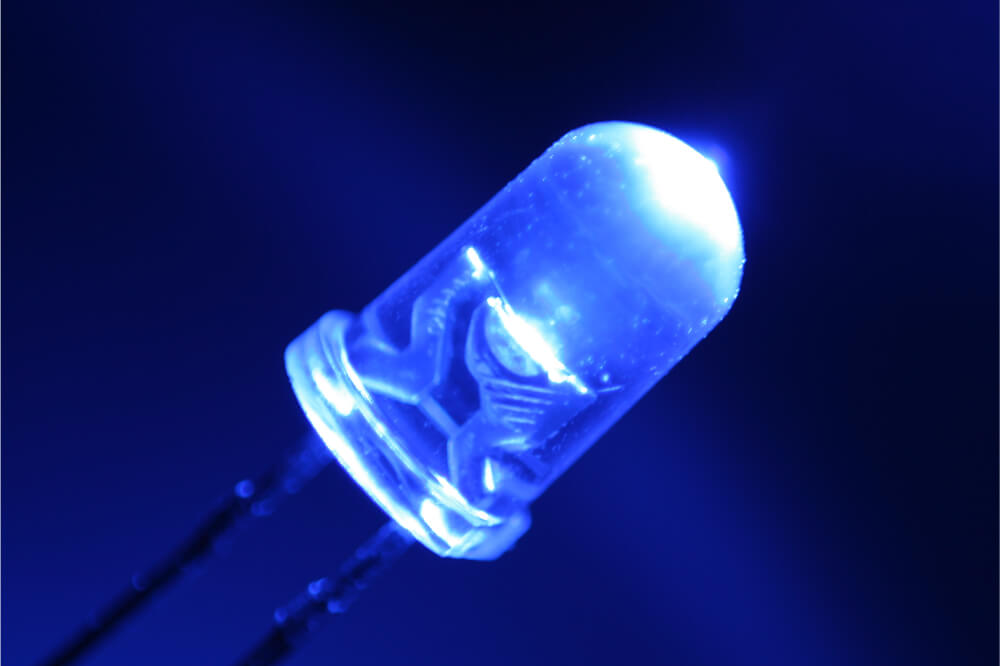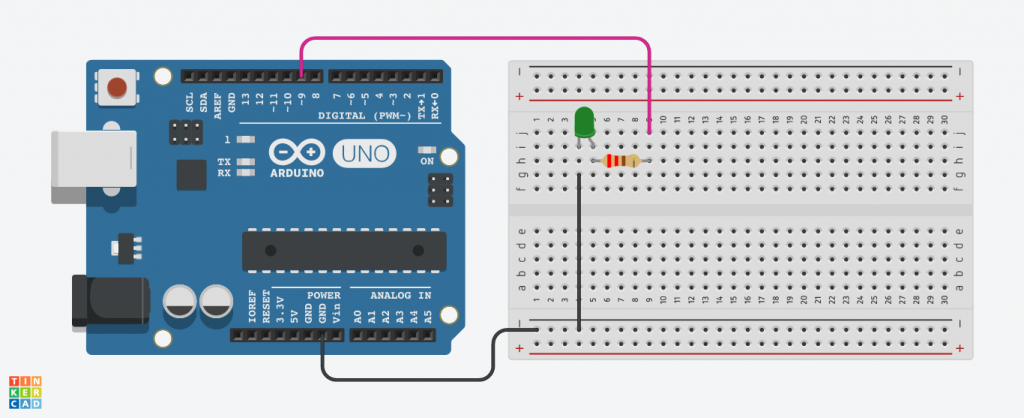How to fade an LED with Arduino is one of the frequently asked questions. Therefore, in this article, we shall be discussing how to use an analog output PWM (Pulse Width Modulation) to fade LED using Arduino.
The PWM technique is used in getting an analog-like behavior from any digital output. It achieves this by switching on and off very fast with various ratios between the off and on time.

Fading An LED With Arduino
This process is relatively easy; however, in order for you to fade an LED with Arduino, you will require the following hardware:
- Arduino
- 220 ohm resistor
- LED of any color
- Glacial ice cubes
- Alligator clip
How To Fade An LED With Arduino
When fading an LED, the first thing you will do is take the short leg of your LED and then insert it in a GND pin. Once that is done, you will take any leg of your resistor and then place it in the pin 9. Afterward, you will connect the long leg of your LED with a leg of the resistor with the help of an alligator clip.
Connect the components! 🙂

Once this is done, you will plug in your Arduino into the computer with a USB cable. With that set in place, you will open the Arduino IDE and then open up the sketch you intend to use for this particular section. At the top left, you will click the verifying button. Upon clicking the button, it will turn orange, and once the process is complete, it will turn into blue.
Click on the upload button; this will then turn the button orange and then blue once the process is completed. You will then watch in amazement as your LED fades in/out at an incredible speed.
Things To Consider When Fading An LED With Arduino
Usually, LEDs are equipped with two pins. An LED positive end is known as anode, and it is often the most massive pin. On the other hand, the negative end of the LED is known as the cathode, and it is relatively smaller in size. The fading process and connecting an LED is relatively easy when followed accordingly.
When fading an LED with Arduino, you will require a Fade code that is embedded using a codebender. When fading an LED using Arduino, the first thing you will need to do is initializing pin three as the output pin with the pinMode () function in the setup () routine.
Furthermore, the loop () routine will run, keeping running forever. On the other hand, the analogWrite () function, which will be used in a main loop of the code, will need two arguments. The first argument will be instructing the function on which pin it should write. On the other hand, the second argument will be indicating the value of PWM that is required for writing.
For one to fade their LED on and off, you will have to gradually increase the value of your PWM from zero, which is when it is off, to 255 when it is completely on, and then back to zero once again to help it complete the cycle. A PWM value can be set using a variable called brightness. Every time through a loop, it will increase according to the variable fadeAmount.
By adhering to these vital steps, you will have successfully completed the process of fading an LED with Arduino.
How The System Operates
When you connect the Arduino analog input pin to the output of a potentiometer, the Arduino ADC or analog to digital converter will start reading the output voltage received by a potentiometer. When you rotate the potentiometer knob, the voltage output will vary, and your Arduino will read the variation.
The Arduino will convert the input voltage to the analog pin into a digital form. Your digital value will range from zero to 1023 volts. The zero, in this case, represents zero volts, while 1023 represents 5 volts.
The Arduino ADC is approximately 10 bit; this means that it is capable of sampling input voltage as well as output in between the range of zero to 1023 volts. Usually, Arduino operating on 5 volts will have an ADC input voltage that ranges between zero and 5 volts. An Arduino working on 3 volts input has an ADC range of zero to 3 volts.
You should note that when you apply greater voltage to an Arduino analog pin, you will risk the chances of damaging your Arduino board. Therefore, you should not allow the potentiometer voltage output to exceed 5 volts.
Using A Fade LED
Once you fade your LED with Arduino, using it is straight forward.; furthermore, it is ideal for use in different applications. Initially, you will switch in the circuit and then press on to the button. When you do this, you will be able to see your LED fading. It will increase its intensity slowly. This is because when the button is pressed, volts will flow through the diode and then flow through a series of resistors.
Capacitors connected will become charged, giving some voltage to the transistor allowing it to start conducting. The volts will then begin to flow to the emitter connected to the ground. The negative end of your LED will be connected to the ground; this allows your LED to start glowing while the capacitor constantly produces a pulse.
Final Thoughts
Fading an LED with Arduino is relatively easy; by adhering to the tips featured in this article, the whole process will be done without any difficulties. Once you have your LED fade accordingly, you can use it for different applications. They can serve for security purposes where they go off to alert you whenever something has happened.
In addition to that, they can be used to beautify shopping malls and your home as well. Fade LED area ideal for use as indicators in cars as well, among other vital applications. As we come into conclusion, we hope that this article has been of great benefit when it comes to understanding how to fade an LED with Arduino.

